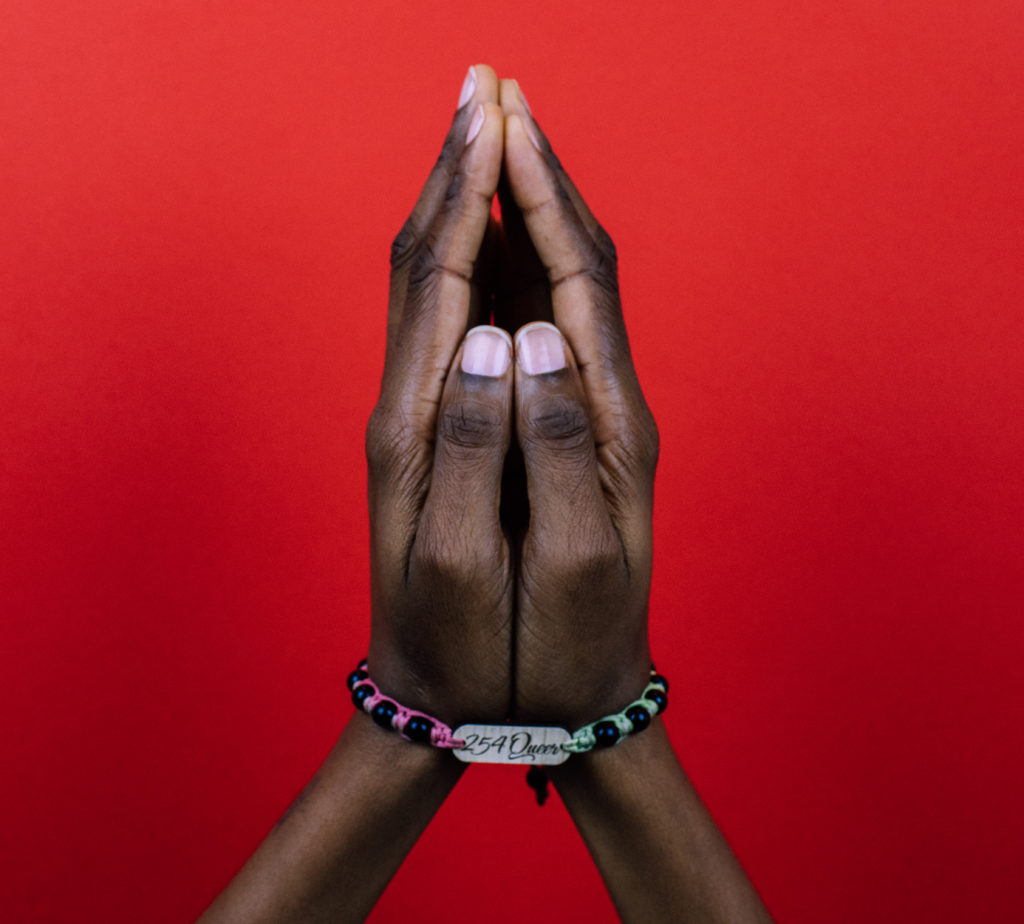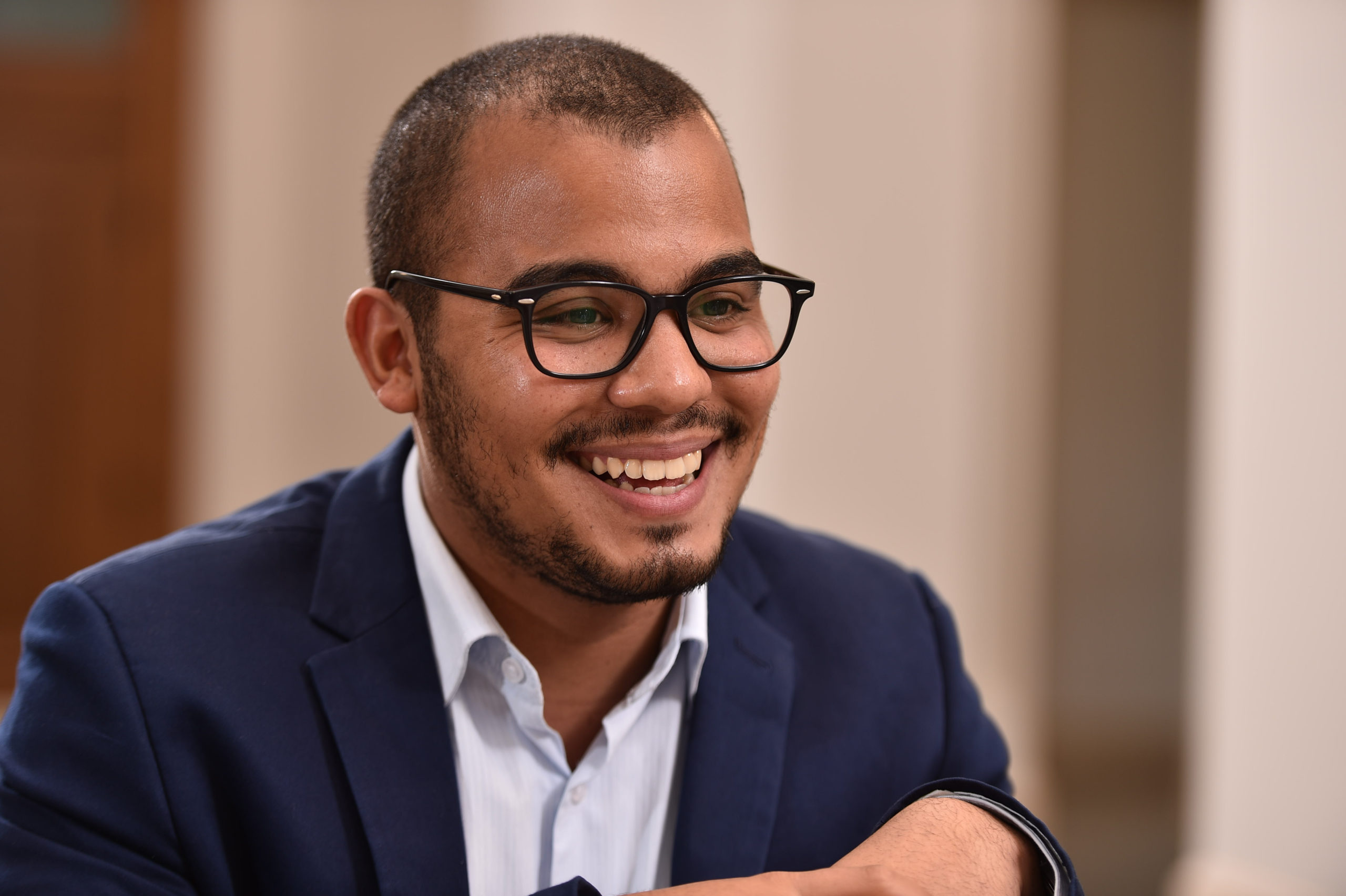
Adriaan van Klinken’s book, Kenyan, Christian, Queer: Religion, LGBT Activism and Arts of Resistance in Africa, is a wonderfully lucid and intellectually sharp monograph exploring the forms of activism deployed by LGBT Christians in Kenya and their modes of religious rereading, reconstructing, and reimagining. Van Klinken’s book is grounded in the multilayered analysis of postcolonial Kenyan (sexual) politics and its intimacy with religious, aesthetic, and discursive regimes. This scholarly orientation clearly presents itself when van Klinken draws on the lived realities, artistic interventions, and theological productions of his queer interlocutors—especially as he positions them as responding to the Global North’s claims of the “African homophobe,” as well as the assertions of some African political and religious leaders that the practice of homosexuality is “un-African,” and therefore a corrupting import from the West.
Through a careful weaving of textual analysis and descriptions of thick ethnographic material, van Klinken challenges both hegemonic readings of “queerness” in Euro-American queer theory and postcolonial claims of homosexuality as un-African. In this regard, both responses to the presence of non-normative genders and sexualities are a continuation of colonial Orientalist and binary logic truncating the possibilities of human flourishing. However, this particular type of response is based on the idea of an absence; an absence of queerness on the African continent. In the case of the Euro-American academy, van Klinken challenges the supposed secularity of queerness. And in the case of postcolonial claims, van Klinken demonstrates how queerness has historically been part of the African cultural landscape and how queerness is manifested in the contemporary period. Van Klinken textures this intersectional location of the queer African by foregrounding the voices of real and embodied people. This engaged move not only makes claims to religious authority, but it also demonstrates how local groups in Kenya are collectively rearticulating what it means to be Christian in Africa. This move thus showcases how Christianity is taken up in various ways.
I enjoyed how van Klinken nuances discourses of “African homophobia” by archiving and examining the ways in which queer Christians in Africa draw “on religious language and symbols” to make a claim to religious authority by creatively rereading the tradition (6). Moreover, van Klinken’s work also engages with the “canon” of queer theory. Drawing on the work of Melissa Wilcox, van Klinken challenges the supposed secularity (and therefore modernity) of queerness by centering his analysis on the embodied and subtle discourses of queer religious folks in Kenya. In so doing, van Klinken (and many others such as Andrew K.T. Yip and Scott Siraj al-Haqq Kugle) are challenging the “militantly secular” (and insular) form that queer studies in the Global North takes (van Klinken, 14). For van Klinken, a decolonial intervention in queer studies requires an interrogation of the implicit assumptions undergirding queer studies in the Euro-American academy. This intervention, as van Klinken writes, would critically examine the “Western secular epistemological assumptions underlying much of queer studies” which often posits a static, antagonistic, and conservative view of religion (14). Following a postsecular trend, van Klinken advocates for an understanding of religion as a constructed category and therefore as part of a particular regime of power. In this light, the constructed category of religion can be viewed not only as a site of oppression for queer bodies, but also as a source of meaning-making and liberation.
I found this intervention generative, particularly when parallels emerged between it and my work on queer Muslims in post-apartheid South Africa. In this light, by producing what Islamic Studies scholar Sa’diyya Shaikh calls a “multiple critique” in the context of Islamic feminism, van Klinken’s book address the intersectional challenges of reading queerness in postcolonial Africa. Shaikh’s multiple critique is constituted by three interrelated and interconnected elements: an external critique of Islamo-racism, an internal critique of Muslim patriarchy, and movement-building and future-thinking.
Following a postsecular trend, van Klinken advocates for an understanding of religion as a constructed category and therefore as part of a particular regime of power. In this light, the constructed category of religion can be viewed not only as a site of oppression for queer bodies, but also as a source of meaning-making and liberation.
Thinking with van Klinken and Shaikh, at the intersection of Islam and queerness, we can see how, on the one hand, homosexuality (as an identity) was imported from the west and codified during the period of European colonization of the Islamicate world and has since then been constructed as “unIslamic.” This framing, in the minds of some (see Joseph Massad), reveals that the contemporary figure of the gay man and (to a lesser extent) the lesbian woman is constructed in the west and imported into the Arab and Muslim world via the financial (and ontological) strings of the development and peace complex. On the other hand, we can also better understand the emergence of sexualized and gendered readings of Islamicate societies which construct Islam and the figure of the Muslim as the ultimate homophobe (see the work of Jasbir K. Puar, Fatima El-Tayeb, and Momin Rahman).
Both of these traditions of critique are essential for the cultivation of a decolonial/queer ethic. However, the activism and agency of local actors should also be taken seriously. One such form of activism is the discursive work of activists and scholars who center the lived realties of precarious social classes at the center of their intellectual and political commitments. In this regard, following Shaikh’s multiple critique, a robust analysis of Islamically sanctioned forms of homophobia should be uncovered, challenged, and transformed. On a theological level, Kugle’s Homosexuality in Islam is the ideal starting point as it engages with the sacred sources of Islam (Qur’an and hadith) and its legal (fiqhi) ramifications. Additionally, the works of Afsaneh Najmabadi, Tom Boellstorff, and Wim Peumans convey the different and multivocal registers of sexual normativity and deviance in Islamicate communities.
The final part of Shaikh’s multiple critique is religious and political transformation. This is the cultivation of alternative worlds which present the possibility of a different way of being. A striking embodied example of this is the cultivation of an alternative religious space of meaning-making and community-building. Van Klinken’s fourth chapter on gay churches was particularly attention-grabbing. This chapter struck me due to its resonance with my own work on The Inner Circle, a “gay mosque,” in Cape Town. As one congregant said on a documentary series:
I came to this mosque to be able to pray in a space that is not gender segregated, to be able to stand in the front row, behind the imam, to sometimes be asked to lead the prayer, just to be in a space where women are in the front lines, are included as much as possible, are really actual participants, and not on the sidelines and forgotten about.
As this congregant accurately notes, the space that The Inner Circle creates should be recognized as a place where marginalized Muslims—from across the identity and ideological continuum—gather to “participate in religious meaning-making through the performance of supplicatory prayers and expressions of pious belonging and commitment.” This sacred space, created by The Inner Circle, reconstructs the Islamic tradition by creatively redeploying its narratives, rituals, and symbols. However, this deployment not only continues some aspects of the (discursive) tradition, it also alters and reimagines it in a way that creates a vision for an egalitarian future. This is also an interesting manifestation of Atalia Omer’s hermeneutics of critical caretaking.
Perhaps closely related to this type of transformational work is a foundational commitment to an intersectional and interdisciplinary approach to the study of religious queerness in postcolonial Africa. Through his creative use of ethnographic methods and textual analysis, van Klinken clearly conveys the contours of his capacious landscape. Through his deployment of ethnography along with queer theory’s critique of hegemonic forms of power, van Klinken shows that he is deeply cognizant of the power his body commands in postcolonial Kenya. Through his mixed methodological approach (textual analysis and ethnography) van Klinken provides a clear account of a fluid and dynamic approach to the ethnographic study of religion. His four ethnographic reflections (and interspliced interludes) expose the workings of power embedded in the process of knowledge production.
By deploying a “queer approach to ethnography” van Klinken demonstrates how power is relationally constructed and dynamically mobile. Drawing on queer theory’s critical awareness of the fluid nature of power, van Klinken reflects on his engagements in the “field,” especially as an embodied researcher. He writes (reminiscent of Foucault) “power, in this approach, becomes multidirectional.” This showcases how both researcher and participant(s) are embedded in a network of power. This network illustrates power’s relational constitution, demonstrating how researchers and participants “are dependent on one another” (186). In this way, through enacting a political ethic of care toward his interlocutors, van Klinken demonstrates how reading queerness in Africa for nuance requires reading for intersectionality and an attentiveness to the ambivalent role of religion on the continent. This is an astute approach to research ethics, especially as we—students, researchers, scholars—grapple with the dynamic challenges of the field like conducting research with/about precarious or marginal(ized) classes.

